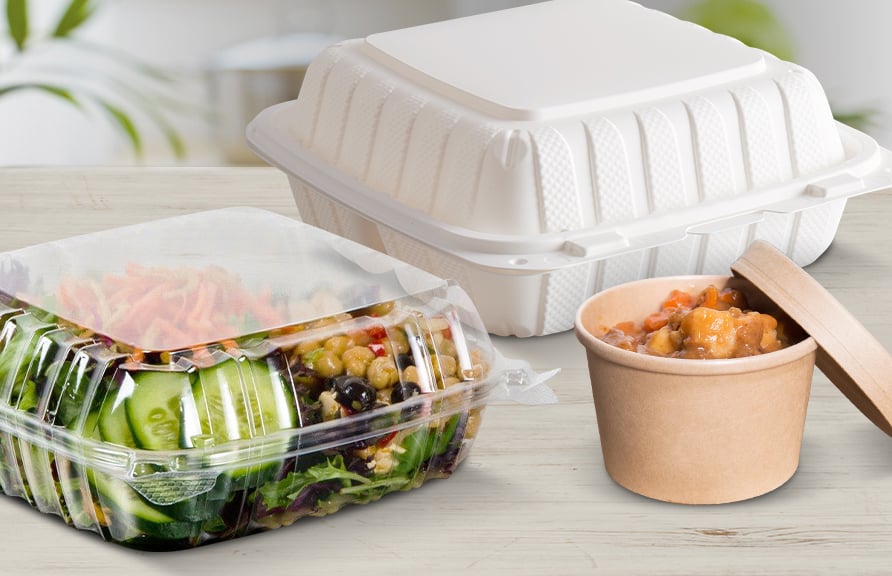
Food packaging has always played a critical role in keeping the quality and safety of food products. From ancient civilizations to portion cups times, the methods and materials used in food packaging have continuously evolved to meet the changing needs of consumers, manufacturers, and the environment. In recent years, the focus has moved towards sustainable packaging solutions, reflecting growing concerns about environmental impact and the need for more eco-friendly practices in the food industry. The history of food packaging dates back thousands of years, with early civilizations using natural materials such as leaves, animal skins, and clay courts pots to store and transport food. These materials served the primary intent behind keeping food and protecting it from contamination and spoilage. As organizations advanced, so did their packaging techniques, leading to innovations such as glass baby bottles, metal beers, and paper-based packaging. The industrial movement brought on significant changes in food packaging, with the technology of tin beers, glass jars, and cardboard boxes revolutionizing the way food was stored, transported, and sold. These innovations not only extended the space life of food products but also made them far more convenient and accessible to consumers. The rise of supermarkets and mass production further propelled the demand for standard packaging solutions that could withstand long-distance transportation and prolonged storage.
The mid-20th century saw the widespread adoption of jackets in food packaging, offering lightweight, durable, and versatile alternatives to traditional materials. Plastic packaging revolutionized the industry, enabling the development of innovative packaging designs such as reduce wrap, vacuum-sealed pouches, and microwavable containers. However, the growth of plastic packaging also gave rise to concerns about environmental toxins and the deposits of plastic waste in landfills and oceans. In recent decades, the environmental impact of food packaging has come under scrutiny, prompting the food industry to get more sustainable alternatives. Individuals are increasingly demanding packaging solutions that minimize waste, reduce carbon footprint, and use renewable resources. As a result, there was an evergrowing trend towards eco-friendly packaging materials such as biodegradable jackets, compostable packaging, and recyclable materials like paper, glass, and aluminum. The search for sustainable packaging has led to a samsung s8500 of innovation in the food industry, with companies investing in research and development to create packaging solutions that balance functionality, safety, and environmental sustainability. Bioplastics derived from renewable sources such as cornstarch, sugarcane, and algae are gathering popularity as alternatives to conventional jackets, offering similar properties with lower environmental impact. Likewise, compostable packaging made from plant-based materials like cellulose and PLA (polylactic acid) is becoming increasingly common, providing a biodegradable option for food packaging.
Furthermore, advancements in packaging technology have led to the development of intelligent packaging systems that monitor food freshness, temperature, and integrity in real-time, helping to reduce food waste and ensure product quality. Active packaging solutions incorporating antimicrobial agents, oxygen scavengers, and moisture absorbers are also being used to extend the space life of perishable foods and reduce the need for preservatives. Governments and regulatory agencies around the world are implementing policies and regulations to promote sustainable packaging practices and reduce plastic waste. In the european union, for example, the Single-Use Jackets Directive aims to ban or restrict the use of certain single-use plastic products and promote the use of more sustainable alternatives. Similarly, initiatives such as Extended Producer Responsibility (EPR) programs require manufacturers to take responsibility for the end-of-life management of their packaging materials, encouraging them to design for recyclability and reuse. At the industry level, many food companies are following voluntary responsibilities and sustainability pledges to reduce the environmental impact of their packaging operations. This includes initiatives to increase the use of recycled materials, boost packaging design to minimize material usage, and invest in infrastructure for trying to recycle and waste management. Collaboration across the supply sequence, from raw material suppliers to retailers, is essential to drive meaningful progress towards a circular economy for food packaging.
While significant strides have been manufactured in the development of sustainable packaging solutions, challenges remain in scaling up adoption and addressing complex issues such as infrastructure, consumer behavior, and cost competitiveness. The cross over to a circular economy for food packaging requires coordinated efforts from all stakeholders, including government, industry, academia, and consumers. Education and awareness campaigns are necessary to inform consumers about the environmental impact of packaging choices and encourage responsible consumption habits. Looking ahead, the future of food packaging lies in continued innovation, collaboration, and commitment to sustainability. Emerging technologies such as 3d printing, nanotechnology, and bio-based materials hold promise for further enhancing the performance and environmental profile of food packaging. By looking at these advancements and following a all natural approach to packaging design, the food industry can reduce its environmental footprint while ensuring the safety, quality, and accessibility of food for future generations.